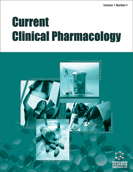Abstract
As bacterial vaginosis (BV) is a potential cause of obstetric complications and gynecological disorders, there is substantial interest in establishing the most effective treatment. Standard treatment - metronidazole or clindamycin, by either vaginal or oral route – is followed by relapses in about 30% of cases, within a month from treatment completion. This inability to prevent recurrences reflects our lack of knowledge on the origins of BV. Atopobium vaginae has been recently reported to be associated with BV in around 80% of the cases and might be involved in the therapeutic failures. This review looks at the potential benefits of nifuratel against A. vaginae compared to the standard treatments with metronidazole and clindamycin. In vitro, nifuratel is able to inhibit the growth of A. vaginae, with a MIC range of 0.125-1 μg/mL; it is active against G. vaginalis and does not affect lactobacilli. Metronidazole is active against A. vaginae only at very high concentrations (8-256 μg/mL); it is partially active against G. vaginalis and also has no effect on lactobacilli. Clindamycin acts against A. vaginae with an MIC lower than 0.125 μg/mL and is active on G. vaginalis but it also affects lactobacilli, altering the vaginal environment. These observations suggest that nifuratel is probably the most valid therapeutic agent for BV treatment.
Keywords: Bacterial vaginosis, review, Atopobium vaginae, nifuratel, antibiotic resistance, metronidazole, clindamycin, Herpes symplex virus, lactobacilli, microorganisms
 57
57





















